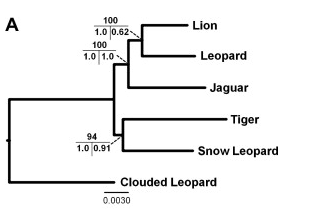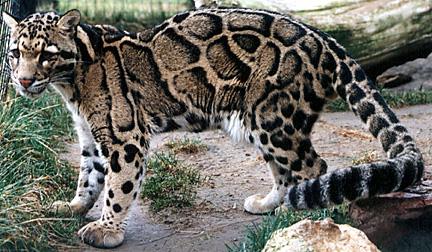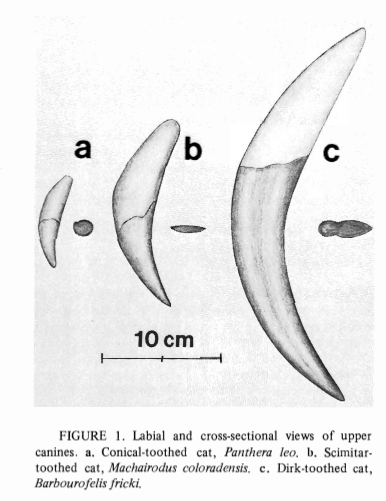Arboreality in Clouded Leopards (Neofelis nebulosa)
Biology 342 Fall 2015
Avehi Singh & Karla Velarde
PHYLOGENY OF THE CLOUDED LEOPARD

Figure from Davis et al. 2010. Maximum likelihood (ML) phylogenetic tree constructed using a supermatrix rooted with the clouded leopard as the outgroup.
The phylogeny of the big cats has been widely debated, but most studies have suggested that the clouded leopard is a link between the Pantherinae and Felinae subfamilies. Clouded leopards are similar to smaller cats as they are arboreal; many smaller arboreal cats show similar adaptations to the clouded leopard and none of the other big cats are arboreal. This hypothesis is supported by most phylogenies created thus far, as they show that the clouded leopard is less closely related to the other big cats (Lion, Tiger, Leopard, Jaguar, Snow Leopard and Longdan Tiger) than they are to each other (King and Wallace 2014), (Lynam et al. 2013), (Collier & O’brien 1985). Studies have shown that the clouded leopard separated from the Panthera lineage approximately 6 million years ago (Yu & Zhang). It is now classified as a separate genus: Neofelis. Recent analysis based on mtDNA, nuclear DNA sequences, microsatellites, fixed chromosomal differences and morphological variation has suggested that Bornean Clouded leopards should be reclassified as a separate species N. diardi or the Sunda Clouded leopard (Lynam et al. 2013).

Sunda clouded leopard, image copyright Wikimedia Commons.
PATTERNS OF RADIATION AND NICHE OCCUPATION
Variation in the camouflage patterns displayed on the flanks of many felids have been shown to be related to their ecology. The clouded leopard, which has a strong preference for an arboreal tropical forest habitat, exhibits more irregular coat patterns. These aspects of patterning are evolutionary labile, suggesting that felids have radiated rapidly to fill new and diverse niches (Allen et al). This result seems to lend support for ideas proposed by Lynam et al. (2013). The clouded leopard is sympatric with several other species of cat (such as the leopard Panthera pardus and the leopard cat Prionailurus bengalensis). This results in resource partitioning, which causes differential niche occupation. Clouded leopards may have radiated rapidly to fill available niches in order to minimize competition for prey with these other cats.
OTHER MORPHOLOGICAL ADAPTATIONS
The clouded leopard also differs in the morphotype for upper canines. It is one of the cats that has massively large canines in proportion to its skull and body size, much like the saber-tooth cat. Both the clouded leopard and saber tooths have or had an enormous gape, 100 degrees (a modern lion has a gape of 65 degrees) (Clouded Leopard Project 2003-2011). This large gape may indicate that the clouded leopard may hunt large prey in the wild. It is also possible that clouded leopards are able to instantly kill their prey by biting their neck and penetrating their long canines (much like the saber-tooth), while living big cats bite the neck in attempts to suffocate their prey.
In general, there are three reported basic morphotypes for upper canines in cats: conical-toothed cats have short, unserrated canines having a round cross-section, scimitar-toothed cats have short, broad canines, usually with very coarse serrations and dirk-toothed cats have long. slender canines which usually have fine serrations (Martin 1980). The upper canine of all modern cats is round in cross-section and forms a posteriorly recurved cone: conical-toothed. Conical-toothed cats tend to stalk their prey until they are able to close in on it because they tire quickly despite the fact that they are capable of great speed (Martin 1980). The clouded leopard has a similar morphotype for its upper canines as other modern cats, however, there is a clear difference between clouded leopards and other big cats (Pantherinae subfamily) in the ways in which they use their teeth due to the clouded leopard’s arboreal lifestyle.
